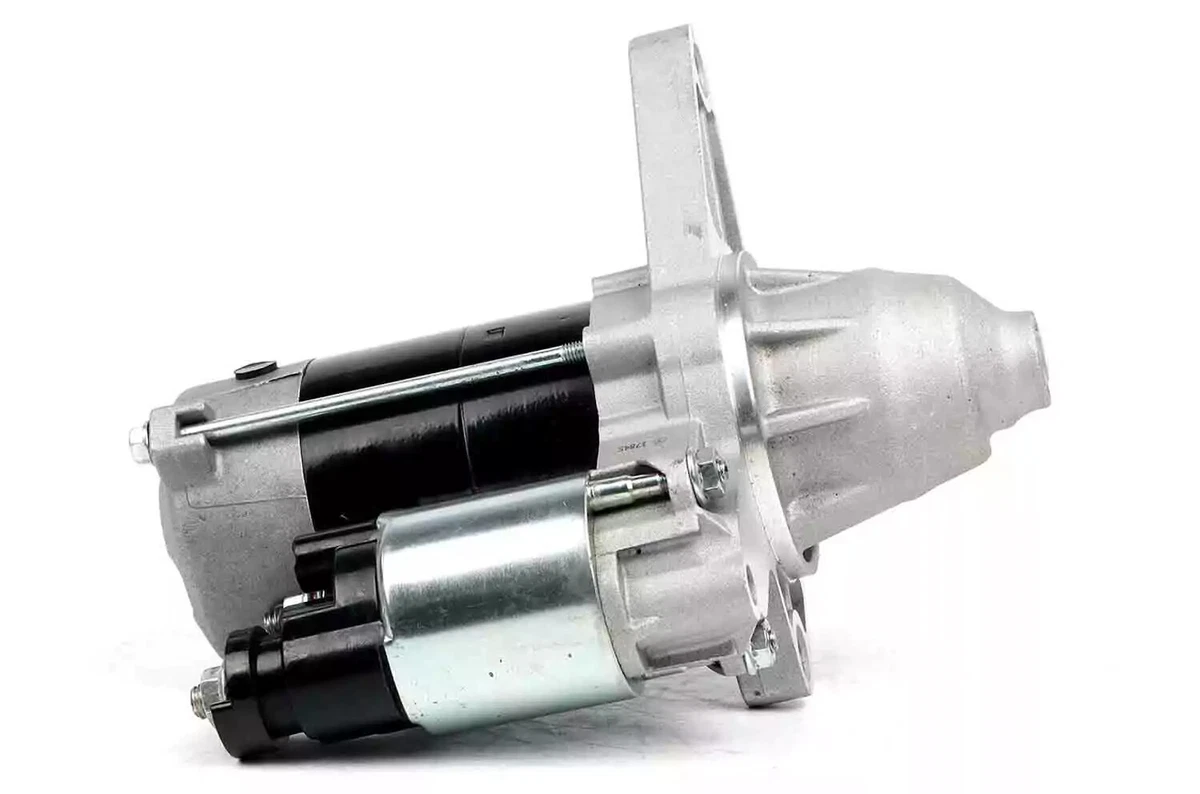Replacing a car starter motor is an easy job even for a novice mechanic. But it’s important to get the right starter for your car. Starters all have the same job. However, there are small but important differences from one model to the next.
Our guide will help you identify the starter you need and point out a few other parts that you should consider replacing when you’re doing a starter.
What to Consider When Buying a Starter

If you’re on a budget, a used OEM starter motor might seem like a good idea. But when you consider the cost of shipping and the installation time, it might not be.
The first thing to check is if you need a new starter at all or if you have misdiagnosed the problem. When you turned on your car, did all the lights come on? If not, you’re likely looking at a dead battery, not a dead starter. To help with a diagnosis, read this:
Everything You Need to Know About Car Starters
- opens in new window or tab.
.
The next thing to consider is your budget. You could find a used starter or buy a remanufactured starter to save some money. Used and remanufactured starters can last for years. A new OEM replacement part is the least risky option but the most expensive. What you should avoid is spending money on no-name parts that can fail as quickly as they go into your vehicle.
What’s most important is to buy exactly the right starter motor for your car. Even the same make, model, and year of a particular car might come with different motors for different trim levels. For example, the starter for a car with a manual transmission might not interchange with the starter for the same model equipped with an automatic transmission. Double-check the repair manual and part numbers if you aren’t sure.
Before you start the job,
consult our how-to article and video about replacing a starter
- opens in new window or tab.
. It’s a great primer or refresher course, and it includes a shopping list so you don’t forget anything.
How to Find a Starter That Fits Your Car

Remanufactured starter motors are significantly less expensive than brand-new units and may be covered by warranties.
Use the
eBay Parts Finder
- opens in new window or tab.
. It lets you narrow your search by year, make, and model, as well as by engine and transmission type. This is how you can identify a starter that fits your exact vehicle.
Even with the parts finder tool, it’s a good idea to look up the part number for your specific application and double-check that the listing you find is the correct part.
You can also sort parts by brand, cost, new, or used. Again, you can save money buying a used or remanufactured starter, but avoid cheap and no-name new starters. It’ll save money in the long run.
How Much to Spend on a New Starter

If you own an expensive European sports car, you know that pricey OEM parts like this Bosch starter are par for the course.
Unfortunately, starters aren’t cheap. Prices vary depending on the make, model, age of the vehicle, how many cars use the same starter, and how common the car is.
Starters for mass-produced economy cars are widely available and relatively inexpensive. For example, a remanufactured OEM Denso starter for a 2003 Toyota Camry goes for about $200. There are unbranded starters for less than half that cost, but the Denso is a quality part that will likely last as long as the original starter.
By contrast, a new OEM Bosch starter for a 2003 Porsche 911 starts at about $300. Bosch units for the Porsche range as high as $417 and as low as $266 but are consistently about 50 percent more than the Toyota part. It won’t necessarily last longer than the Denso starter or be of higher quality. The added cost just comes with the territory of buying parts for a low-volume vehicle like a Porsche.
Generally, expect to pay $200 to $250 for a good quality new or remanufactured starter.
Parts Commonly Bought When You Change Starters

Older vehicles typically have solenoids that are separate from the starter. This solenoid is for 1975-1985 Ford F-150 pickups.
When you’re replacing the starter motor, it’s an excellent idea to replace the starter solenoid (if it is separate from the starter motor assembly) and the starter relay. Starter solenoids are commonly housed in the starter itself, and replacing a starter also replaces the solenoid. Relays are generally separate and can easily go bad.
Also, carefully inspect the condition of the starter bolts. Source replacements if they are rusty or corroded or if the threads look worn. Lastly, check all the wiring to the starter and replace any wires or connectors that are brittle, bare, or worn out.
Share your feedback
This article is meant to provide general guidance only. Automotive maintenance, repair, upgrade, and installation may depend on vehicle-specifics such as make and model. Always consult your owner's manual, repair guide for specific information for your particular vehicle and consider a licensed auto-care professional's help as well, particularly for advance repairs.




























































